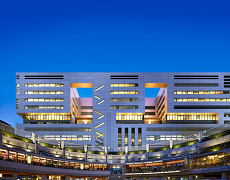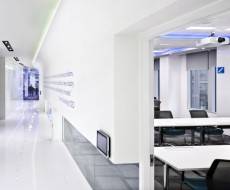April 11, 2014
Database of green buildings to help designers reduce carbon emissions
The first free and publicly available resource for building professionals to access detailed comparative data on carbon in buildings has been launched today. Commissioned by resource efficiency experts WRAP in collaboration with the UK Green Building Council; the Embodied Carbon Database will allow building professionals to benchmark their designs to a far greater extent and help assist them in identifying where carbon reductions can be made. The database has been created in the context of the joint government and industry ambition to reduce emissions associated with the construction industry by 50 per cent by 2025. It’s intended to help organisations meet this ambition by providing a source of data which people from across the whole supply chain, including engineers, architects and quantity surveyors, can use it to benchmark green building designs and as a result, assist in identifying where carbon reductions can be made.






























March 26, 2014
The enduring need to put a bit more of the M into facilities management
by Mark Eltringham • Comment, Facilities management, Furniture, Workplace design
Shutterstock’s new offices, Empire State Building
It may well be a statement of the obvious, but it’s worth reminding ourselves sometimes that the term facilities management consists of two words. There is often a bit too much emphasis on the facilities and a bit too little on the management and sometimes we look for design and product solutions to problems that would be better managed in some way. You can put this down to a number of things but to some extent at least it’s down the idea that when you are determined to use a hammer, every job looks like a nail. Obviously the media takes some of the blame for this mindset because it often earns income from businesses who want to sell their stuff to solve particular problems rather than focus on the idea that many of them can be addressed either as a management issue or in combination with products and design.
More →